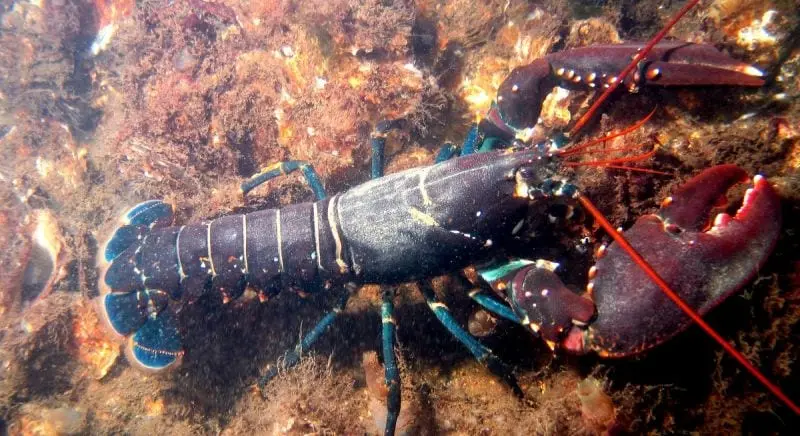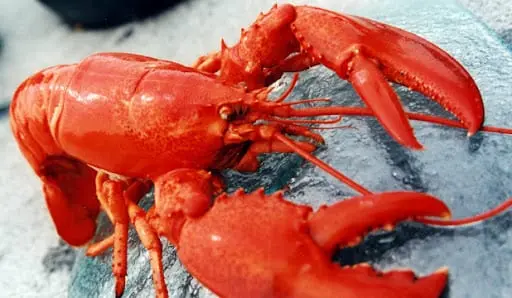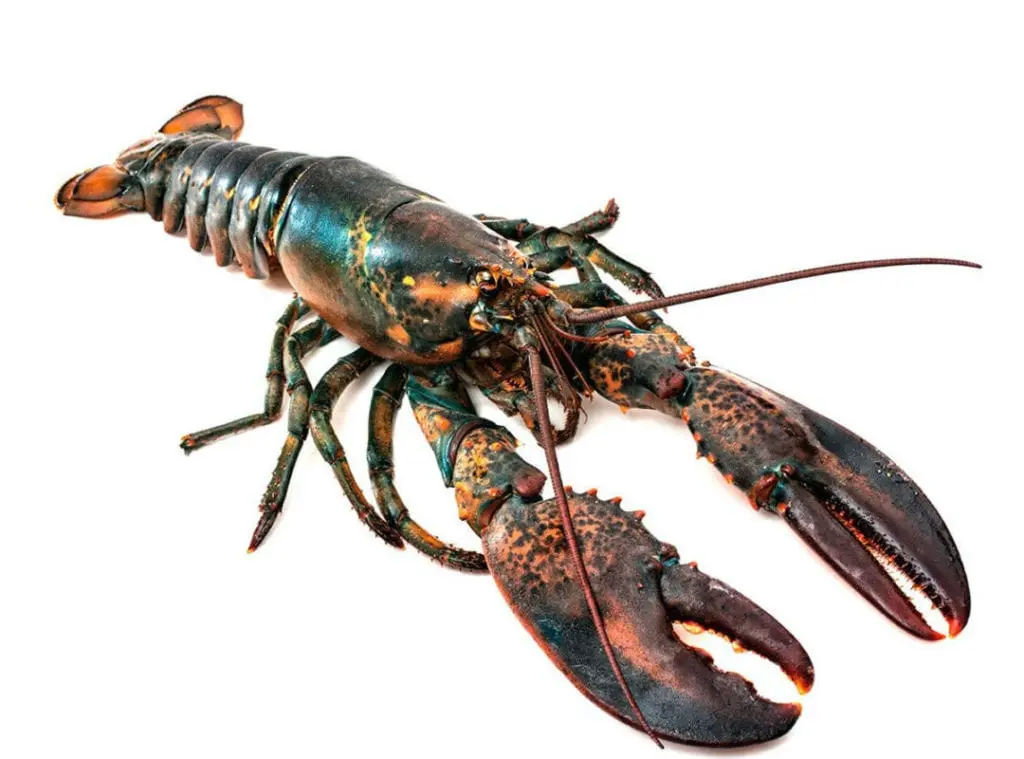Contents
Description
Lobster, or, as it is also called, homar (from the French homard) is one of the most expensive crustaceans on the fish market, one of the largest and also one of the rarest, hence the very high cost.
The price of a kilogram of fresh product starts from 145 euros / dollars. In Spain, two types of this seafood delicacy are mined: common lobster and Moroccan lobster.
An ordinary lobster is deep red with symmetrical white spots, and in the second case, it has a rather pink tint and a kind of fluff over the shell. As it is already clear from the title of the article, red lobster is especially appreciated in the gastronomic arena.
Lobster is native to Cantabria

It is believed that it is in the north of Spain that the most delicious species of this giant crustacean is caught, despite the fact that for the most part it is distributed in the warm waters of the Indian and Pacific Oceans. The red lobster, which is caught off the coast of Cantabria, is also called “royal” for its unusually tender white meat.
This is explained by the fact that the crustaceans are forced to constantly be in motion in order to fight against strong northern currents. In addition, their main food source is a special type of algae, which has a strong influence on the taste of meat.
Official lobster mining opens in the summer months in northern Spain, in the Balearic Islands, from late April to September. Due to the fact that the crustacean population is not too large, it is allowed to catch lobsters only more than 23 cm; they usually reach this size at the age of five.
Composition and calorie content
Lobster meat contains protein, cholesterol, as well as vitamins: choline, PP, E, B9, B5, A and others. And minerals in greater quantities: selenium, copper, zinc, phosphorus, potassium, sodium, magnesium, calcium.
- Proteins: 18.8 g (~ 75 kcal)
- Fat: 0.9 g (~ 8 kcal)
- Carbohydrates: 0.5 g (~ 2 kcal)
Calorie content per 100 g – 90 kcal
The benefits of lobster

Lobster (lobster) is considered one of the healthiest protein foods, it contains fewer calories, cholesterol and fat than lean beef or chicken, but at the same time is rich in amino acids, potassium, magnesium, vitamins B12, B6, B3, B2, provitamin A, and is also a good source of calcium, iron, phosphorus and zinc.
There are many recipes for making lobster dishes. In France they love donuts stuffed with seafood. Lobster broth is used for their preparation. In Japan, lobster meat is an ingredient in dumplings and sushi, while in other Asian countries it is stewed in water with garlic and ginger root.
Lobster meat can also be grilled or boiled with spices. In Spain you will be treated to delicious paella with lobster, in Italy – lasagna with it. Bouillabaisse is popular in the south of France – the first dish of fish and seafood, which is also not complete without lobster meat.
Harm

Despite the great benefits of lobsters, they can also be harmful to the body. For example, with excessive use. The fact is that the cholesterol content in lobsters is quite high – about 95 mg per 100 grams, which gives rise to the development of cardiovascular diseases.
How to store lobster
Lobsters, aka lobsters, are very capricious. They require special attention to their storage. Lobsters cannot be stored for long. They are considered perishable because they do not live more than 2 days, so it is not recommended to store large quantities of thawed and peeled lobsters.
If the lobster is stored without its shell, its meat dries out and becomes weathered, losing its beneficial properties. When choosing a lobster, pay attention to its shell. It should be clean and free of dark spots. if any, the freshness of the crustacean leaves much to be desired and the purchase of such a product should be discarded.
5 Interesting Facts about Lobster

- In the 19th century, lobsters were viewed solely as bait for fish or to fertilize fields.
- British as well as Italian legislation protects animals. Throwing a live lobster into boiling water threatens with a fine of up to five hundred euros! The most humane way is to put the lobster to sleep. Placed in a plastic bag in the freezer for 2 hours, the lobster gradually loses consciousness and dies.
- If there is no refrigerator, it should be immersed in boiling water – at least 4.5 liters per lobster, keeping it in water with wooden spoons for 2 minutes.
- Death occurs in 15 seconds. If the recipe calls for cooking the lobster raw, remove it after 2 minutes.
- The largest – at 4.2 kg in weight – was recognized as a lobster caught by a random fishing boat. Having awarded the nickname Poseidon, he was sent to the public display in the aquarium of the city of Newquay (Cornwell, UK).
Lobster in garlic oil

Ingredients
- Garlic 2 cloves
- Butter 200 g
- Chopped parsley 1.5 teaspoons
- Lobster 2 pieces
- Lemon 1 piece
- Sea salt to taste
Preparation
- Preheat oven to 220 degrees.
- Chop the garlic and grind it in a mortar with 0.5 teaspoon of salt, then mix with parsley and butter.
- Place the lobsters in a large pot of boiling salted water, cover, and cook for 3 minutes. Transfer to a plate and let sit for 5 minutes (the lobster should not be completely cooked).
- Break the shell slightly, cut the lobster in half lengthwise and peel off the entrails. Remove the meat from the tail of one lobster and cut into 8 pieces. Put 2 tablespoons of garlic oil in the empty shell and smooth, then put the meat and put another 1 tablespoon of oil on top. Repeat with the other lobster. Spread the remaining oil over the shell. Transfer to fireproof plates.
- Preheat the grill in the oven and place under the plates for about 4-5 minutes. Serve with lemon wedges.









